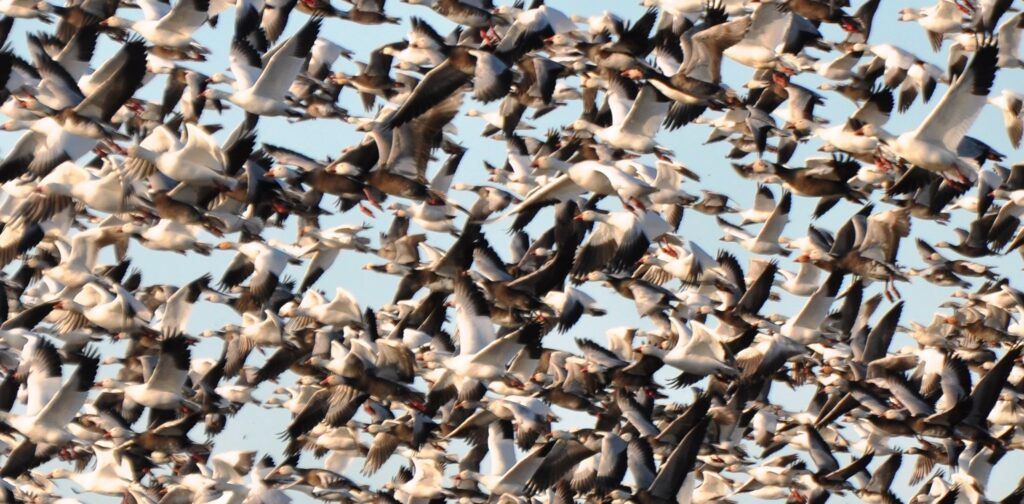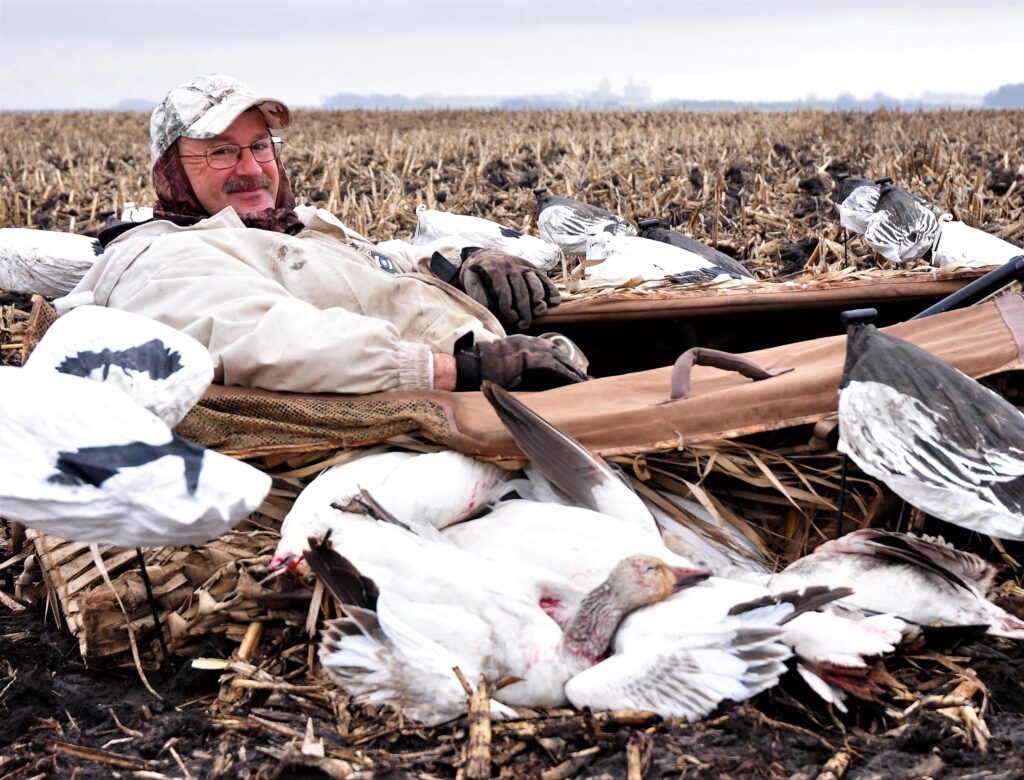Photography courtesy of Lowell Washburn, all rights reserved.
The annual northward migration of the lesser snow goose ranks as one of creation’s most awe-inspiring events. Heading toward ancestral breeding grounds in arctic Canada, goose flocks containing tens of thousands of birds are currently making their way up the flyways. Although Iowa snow goose numbers generally don’t peak until around mid-March, this year’s mild weather has given the migration an early boost with some flocks already making their appearance in the state’s southern counties.

But as every Iowan knows, the transition from winter to spring is an often-fickle event, and migrating snow geese are sometimes forced to make a U-turn as surprise snowstorms force a temporary retreat. In 2015, a whiteout spring blizzard caused flocks to move south again; with some birds retreating all the way to northern Arkansas.
But although the spring snow goose spectacle provides wildlife enthusiasts with opportunities for unparalleled viewing, the event is not without consequence. During recent decades, white geese have become abundant to the point of severely damaging fragile plant life on their remote tundra breeding grounds – a situation that is not only bad for snow geese but for other arctic nesting species as well. In an ongoing effort to stabilize and reduce [snow goose] populations, liberal spring hunting seasons have been allowed by the U.S. Fish & Wildlife Service since 1999. But although a willing legion of hunters have rallied to the cause, spring hunting has had little effect in reducing massive populations.
Successfully adapting to the increased pressure of fall, winter, and spring hunting seasons, modern-day snow geese have arguably become the wariest birds in the sky. To successfully put these flyway veterans in the bag has become the ultimate waterfowling challenge. Rewards can be few and far between. It’s nothing out of the ordinary for groups of hunters to begin setting hundreds of decoys during the wee hours of darkness, sit in those decoys all day, and watch as thousands of northbound snow geese inspect but then shun the spread. When fowlers finally drag from the field at dusk – they are weary and often empty handed.

But there are those rare occasions when snow goose hunts go exactly as planned. I’ve been in on a few of those when the shrill yelping of hundreds of incoming geese became downright deafening and have watched in mesmerized awe as dozens of snows bailed from the flock’s leading edge to begin noisily landing within ten feet of where I sat surrounded by rippling windsock decoys. Those are the memories that – regardless of previous failures — keep a hunter coming back for more. Shots or no shots, the spring snow goose migration remains one of the greatest shows on earth.

 Susan Judkins Josten
Susan Judkins Josten Rudi Roeslein
Rudi Roeslein Elyssa McFarland
Elyssa McFarland Mark Langgin
Mark Langgin Adam Janke
Adam Janke Joe Henry
Joe Henry Sue Wilkinson
Sue Wilkinson Tom Cope
Tom Cope Kristin Ashenbrenner
Kristin Ashenbrenner Joe Wilkinson
Joe Wilkinson Dr. Tammy Mildenstein
Dr. Tammy Mildenstein Sean McMahon
Sean McMahon